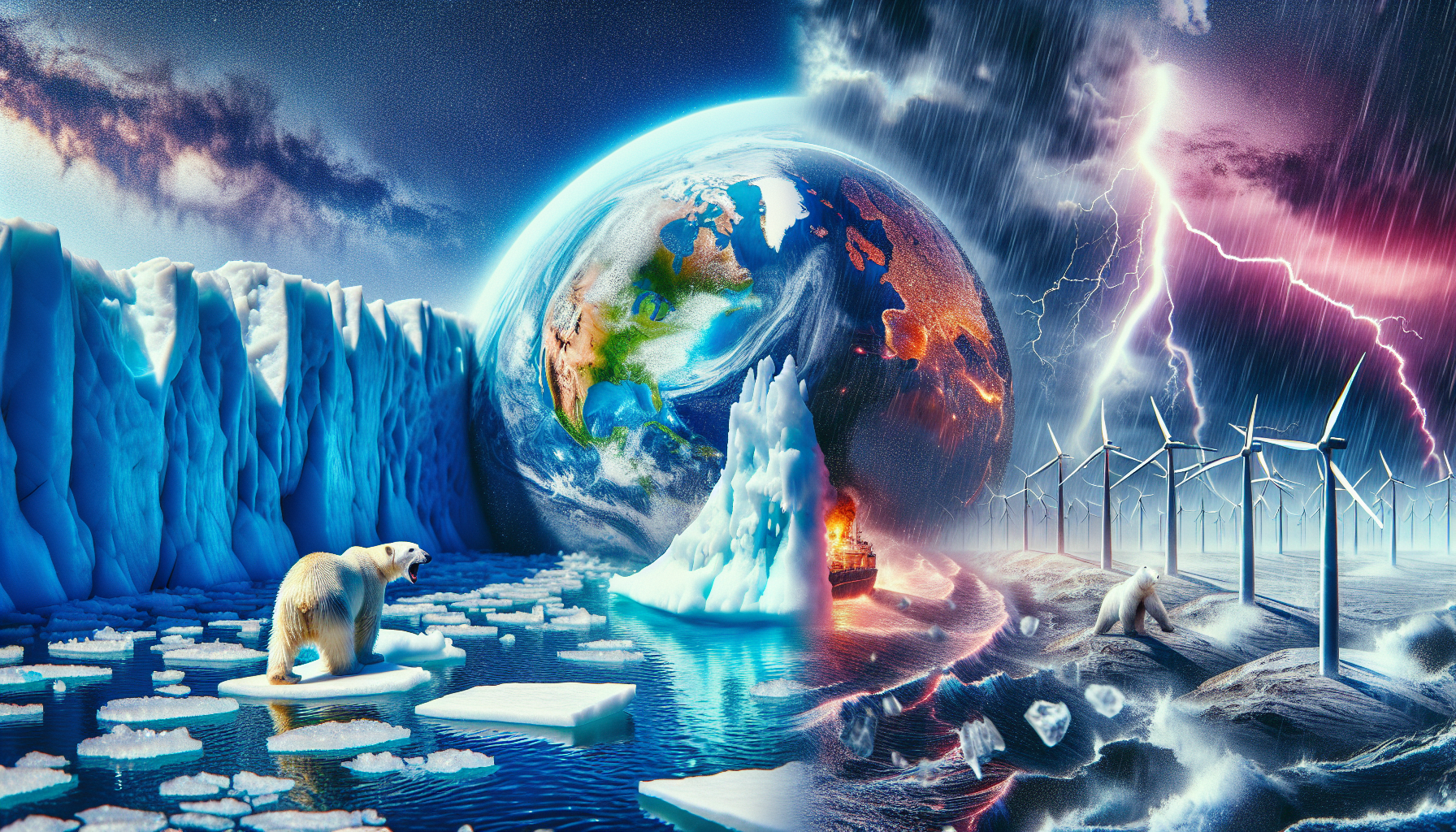Introduction to Climate Change
Climate change is one of the most pressing issues facing the planet today, profoundly impacting global weather patterns. It refers to significant changes in global temperatures and weather over time. Though climate variability happens naturally, the term is widely used in the context of human-induced changes, predominantly due to the burning of fossil fuels, deforestation, and other practices that increase concentrations of greenhouse gases in the atmosphere.
The Science Behind Climate Change
The Earth’s climate system is influenced by the balance between incoming solar radiation and the energy reflected in space. Greenhouse gases (GHGs) like carbon dioxide (CO2), methane (CH4), and nitrous oxide (N2O) trap heat in the Earth’s atmosphere, creating a ‘greenhouse effect’ that warms the planet. With industrialization, anthropogenic activities have significantly increased the concentration of these gases, amplifying the natural greenhouse effect and leading to an overall warming known as global warming.
Disrupted Weather Patterns
As the Earth’s temperature rises, weather patterns become less predictable and more extreme. Heatwaves become more intense and frequent, while cold spells can become harsher in certain regions. This discrepancy is due to the complex way that climate change disrupts the usual flow of air currents and oceanic patterns that dictate weather.
Altered Precipitation
One of the most evident signs of altered weather patterns is a change in precipitation. As global temperatures rise, more water evaporates into the atmosphere. The warmer atmosphere can hold more moisture, leading to heavier and more intense rainfall events. Conversely, some regions experience prolonged periods of drought as rain patterns shift, causing severe water shortages and impacting agricultural productivity.
Intensification of Storms
Another significant impact of climate change on weather is the intensification of storms. Warmer oceans provide more energy to tropical cyclones, leading to more powerful hurricanes and typhoons with higher wind speeds and more significant precipitation. The devastation brought by these storms often leads to loss of life, extensive destruction of infrastructure, and long-term impacts on the economies of affected areas.
Sea-Level Rise and Coastal Flooding
Sea-level rise, primarily due to polar ice melting and seawater expansion as it warms, increases coastal flooding and more frequent storm surges. Coastal cities and small island nations are particularly vulnerable, with many facing existential threats. The resulting saltwater intrusion into freshwater ecosystems and agricultural lands further exacerbates the challenges posed by climate change.
Melting Ice and Polar Vortex Disruption
The Polar Vortex, a band of strong winds around the pole that keeps cold air contained in the polar region, can be disrupted by the warming of the Arctic. A weaker or wobbly Polar Vortex allows cold air to spill southward, bringing freezing weather to mid-latitude regions. Meanwhile, the melting of ice caps contributes to rising sea levels and negatively affects wildlife that depends on ice-covered areas.
Implications for Humanity and Ecosystems
These weather changes do not merely represent statistical anomalies—they have profound implications for ecosystems and human societies. Prolonged droughts threaten food and water security, while extreme weather can cause catastrophic economic damage and loss of human life. Moreover, changes in temperature and precipitation patterns can lead to the displacement of plant and animal species, upsetting ecological balance.
Global Implications and Responses
Climate change is a global issue, and its effects on weather patterns underscore the interconnectivity of countries and ecosystems. The alteration of weather patterns across the globe demands an international response, with countries needing to work together to mitigate the effects and adapt to changing conditions. Measures include reducing GHG emissions, investing in renewable energy, and enhancing infrastructure to withstand extreme weather.
The Urgency of Action
The impact of climate change on global weather patterns is both a challenge and a call to action. To prevent the most catastrophic impacts of climate change, swift and decisive action must be taken. This entails a global effort to transition away from fossil fuels, protect and restore ecosystems, and design resilient communities capable of withstanding the dynamic and often unpredictable forces of our changing climate. Concerted efforts in mitigation and adaptation can help safeguard our environment and societies’ future prosperity and stability worldwide. Every year, the window for effective action narrows, lending an increasing urgency to the world’s collective response to climate change.

